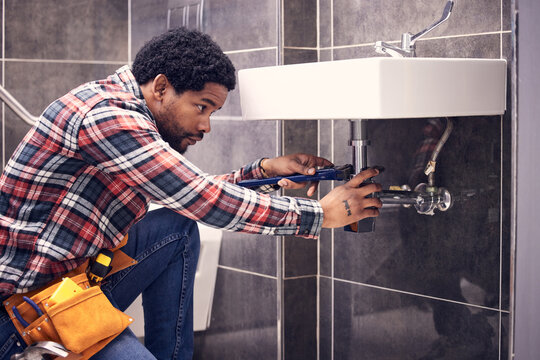Fast and Reliable Drain Cleaning Alabaster AL Services Available
Fast and Reliable Drain Cleaning Alabaster AL Services Available
Blog Article
A Detailed Guide to Effective Water Heating System Installation for Optimal Performance
Embarking on the task of installing a water heating unit is an endeavor that demands precision and a systematic approach for accomplishing ideal performance. As you continue, the intricacies of connecting water supply lines and establishing up trustworthy electrical or gas links wait for, appealing understandings into making sure performance and integrity.
Choosing the Right Hot Water Heater

Next, think about the size and capacity of the water heater. It's vital to evaluate your family's warm water needs, which can differ based upon the number of passengers and their usage patterns. An unit that's also little might cause not enough hot water, while an extra-large model could lead to unnecessary power consumption.
Performance rankings also play a critical function in option. Seek hot water heater with high Power Variable (EF) ratings, showing exceptional efficiency and reduced power usage. Tankless versions, though usually much more costly upfront, offer significant power cost savings over time because of their on-demand heating abilities.
Preparing the Setup Location
Prior to mounting a new water heating system, careful preparation of the installment area is vital. It's critical to determine the area carefully to fit the water heating system's dimensions, guaranteeing appropriate clearance around the unit for reliable operation and servicing.
Check the flooring for security, as the water heating unit will certainly need a strong, level surface to run properly. If necessary, mount a drip frying pan under the unit to catch potential leakages or spills, protecting against water damages to the surrounding location.
In addition, make sure that all necessary devices and materials are on hand prior to beginning the setup. This includes items such as wrenches, screwdrivers, a degree, and any type of additional equipment required for placing and protecting the heater. A well-prepared installment location sets the foundation for an effective water heating unit configuration, optimizing performance and safety.
Connecting Water Supply Lines
When linking supply of water lines to your freshly set up water heating unit, it is critical to make certain that all links are leak-free and safe to maintain effective operation and stop water damage. Begin by identifying the hot and cool water lines. The cool water inlet is usually marked with a blue label or a "C", while the warm water outlet is noted with a red label or an "H".
Usage flexible water heating unit connectors to help with a less complicated setup process. Before affixing the connectors, position a plumber's tape around the threaded ends of the water heating unit's inlet and outlet pipes.
When connections remain in area, gradually transform on the major water shutoff. Check each link for leaks by aesthetically really feeling and examining for dampness. Tighten connections as needed, and guarantee the pressure safety valve is appropriately set up, protecting against too much stress accumulation.
Establishing Electrical or Gas Links
Appropriately establishing up address the electric or gas links for your water heater is a vital action to ensure reliable and safe procedure. For electric water heating units, begin by verifying that the electric circuit is compatible with the heating unit's voltage and amperage demands.
For gas water heaters, safety is extremely important. Link the gas line to the water heater utilizing a versatile gas connector, guaranteeing it is effectively threaded and sealed with pipe joint compound or Teflon tape appropriate for gas connections.
When connections are made, evaluate for any kind of prospective leaks. For gas lines, use a soapy water remedy to the joints; bubbles indicate a leak. For electrical links, double-check that all wiring is protected and effectively insulated, maintaining compliance with neighborhood electrical codes.
Readjusting and examining for Performance
With the electric and gas connections firmly in location, the next step is assessing the operational effectiveness of your water heating unit. Begin by carefully activating the supply of water and ensuring there are no leakages at any of the joints or shutoffs. Once confirmed, continue to fill up the storage tank, taking note of the stress and temperature level setups. It is a good idea to establish the thermostat to an advised temperature level of around 120 ° F(49 ° C) to balance power effectiveness and convenience.
Next, perform a detailed evaluation to ensure the heating aspects or burner are working correctly. For electrical heaters, make use of a multimeter to verify if the components are attracting the he said appropriate existing. In gas models, observe the burner flame; it must be blue and constant, showing reliable burning.
Change the setups as required to eliminate ineffectiveness. Take into consideration executing insulation measures, such as adding a water heating unit blanket, to even more enhance performance by reducing warm loss. Furthermore, check the anode rod's condition, as a worn-out pole can reduce effectiveness and cause storage tank corrosion.
Conclusion
Reliable water heating system installment is vital for making sure ideal efficiency and power financial savings. Firmly linking water supply lines and very carefully establishing up electric or gas links reduce potential problems.

Effectively setting up the electrical or gas links for your water heating system is an important step to guarantee safe and reliable procedure. Get More Information For electric water heating systems, start by validating that the electrical circuit is compatible with the heating system's voltage and amperage demands. Link the gas line to the water heater making use of an adaptable gas port, guaranteeing it is appropriately threaded and secured with pipe joint substance or Teflon tape suitable for gas links.
Report this page